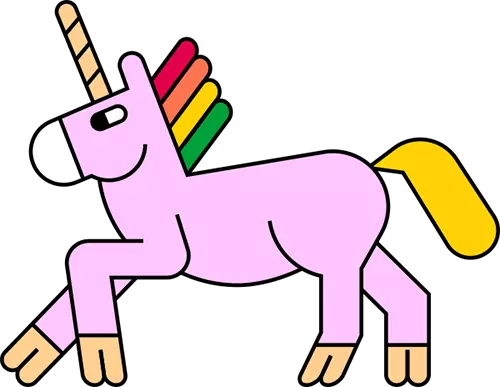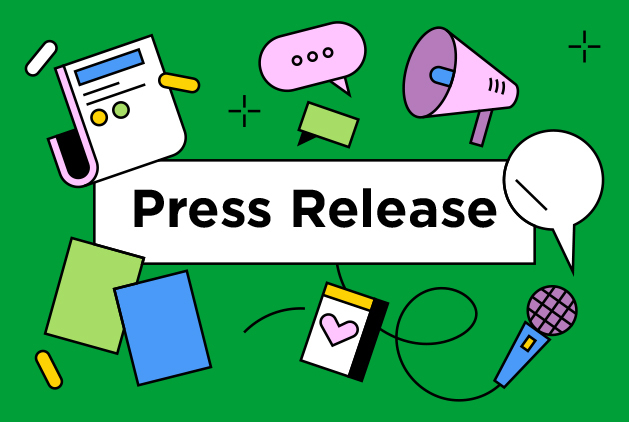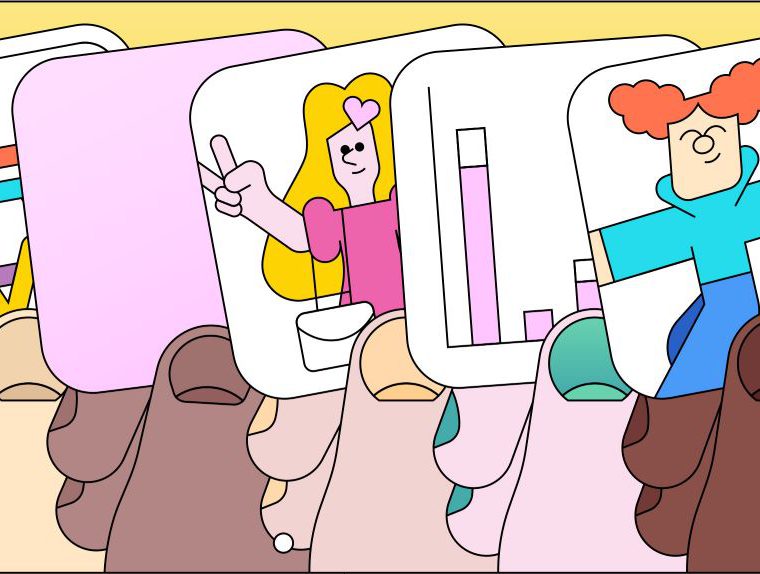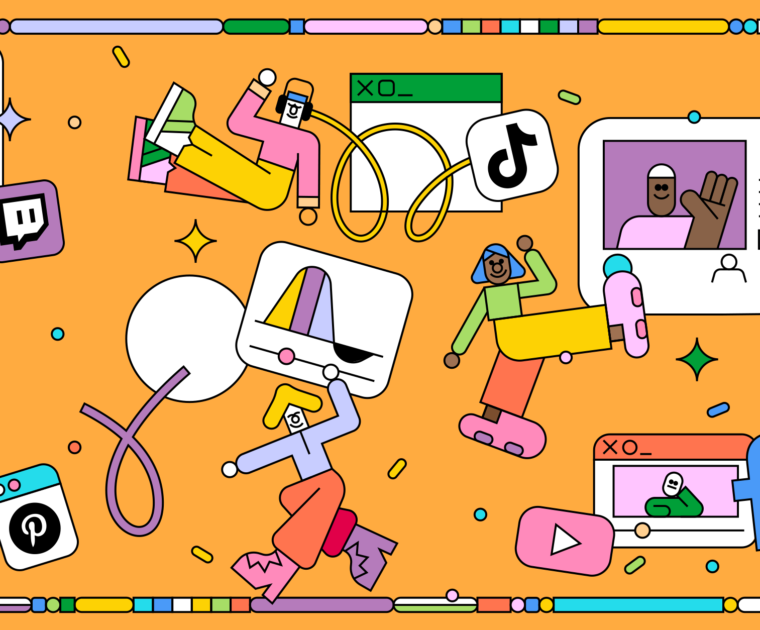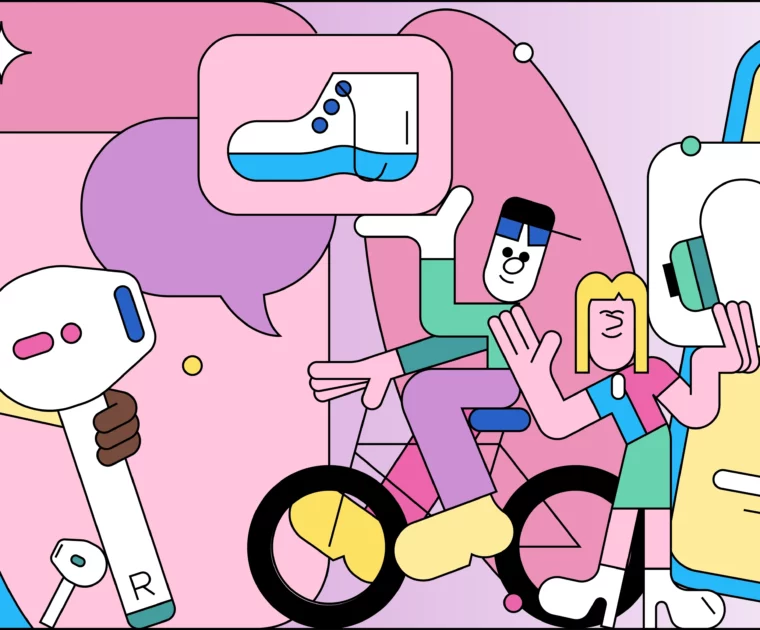Traditional search is built on intent. But the interest graph is built on inference. That distinction changes not just how consumers find products, but also how brands position themselves for discovery.
In the interest graph, users don’t have to know what they’re looking for. Their behaviors – what they watch, save, share, swipe, replay – signal what resonates. The platforms pick up on those signals and respond with content that feels custom-made, even if it’s completely unprompted.
Welcome to the Interest Economy
That’s where creators live.
TikTok’s For You page, YouTube’s Shorts feed, and Pinterest’s personalized boards are all powered by interest-based algorithms – systems trained to serve what users didn’t know they needed.
Thirty percent of consumers say they find new products that they weren’t looking for in For You and Explore Page content. (Paramount Insights)
This type of discovery doesn’t rely on a keyword or a query. It relies on context. And that’s what makes creators so effective at seeding brand awareness. Creators don’t just talk about the product. They integrate it into a story, a vibe, a moment you didn’t realize you related to until you did.
Why Creator Content Fuels Brand Discovery
When influencers naturally use descriptive phrases, product names, and hashtags, their content surfaces in search – on TikTok, YouTube, even Pinterest and Reddit. The brand shows up in the culture of a community – embedded in shared language, not bolted onto it. Super important.
In my previous article on building brand awareness, I called out the words sparks and relevance. The third concept you’ll want to hang on to is embedded.
While the intent graph may be clean and structured (keywords, queries, cost per click), the interest graph is messy. It’s emotional. It’s dynamic. It’s shaped by what a user feels like seeing next, not just what they typed in five minutes ago.
The expectation of seeing content based on how you feel is a feature, not a flaw. And it’s something that’s native to younger consumers.
My daughters can’t reconcile the thought that I had to be home every Friday night at 8:30pm for NINE YEARS if I wanted to catch every episode of Family Matters. Appointment television. You missed it? That was it. Maybe you’d catch the rerun in the summer. Maybe not.
Meanwhile, my 11-year-old binged the entire series in a few weeks. At home. On her tablet. In her blanket cocoon. Whenever she felt like watching it.
That’s the cultural shift marketers are navigating. Gen Z and Alpha didn’t grow up with scarcity of access. They grew up with infinite content on demand. Their expectation is that discovery will match their mood, energy, and curiosity.
So when a creator drops a GRWM featuring your skincare brand or casually shouts out your snack during a road trip vlog, it doesn’t interrupt their audience’s feed. No, it feels like it belongs there.
That’s what makes creator content feel native in the unstructured layer – it runs on the same emotional logic that fuels the scroll.
According to HubSpot and Think with Google, 56 percent of Gen Z say they discover new products most often on YouTube, while TikTok influences purchase decisions for 62 percent of Gen Z – more than any other platform.
When a creator’s content lives in the interest graph, it travels farther, hits earlier, and sticks longer. Because people don’t just remember what they searched – they remember what surprised them.
And that’s the awareness advantage. It doesn’t feel like marketing. It feels like culture.
The Unstructured Layer of Discovery
I think one of my favorite marketing shortcuts right now is mining unstructured data. And it should probably be yours, too. Because awareness doesn’t live in one clean spot anymore. It lives in the blur. The scroll. The “Wait – what was that?” moment you rewind three times and then send to a friend.
This is the unstructured layer of discovery – the space between impressions and intent where brands are felt before they’re ever Googled.
It’s the TikTok video that makes you laugh so hard you check the caption for the product. The creator whose weekend routine includes your serum. The Reddit thread with 300 comments about “that thing I saw once on Instagram and finally found.” The Pinterest board with a saved image you forgot you saved until it shows up again… in an ad that suddenly feels familiar.
These aren’t the traditional search queries so much as they’re moments of recognition.
The unstructured layer isn’t easy to track. Not by any stretch of the imagination. It’s rarely credited in attribution reports. But it’s where affinity is built, and it’s where modern brand awareness actually lives.
The signals here aren’t just clicks or views. They’re:
- Saves
- Shares
- Comments that tag a friend
- Memory hooks from repeated exposure in different contexts
Pinterest users save over 1.5 billion pins per week, and 80 percent say they’ve discovered something new on the platform. My latest Pinterest find is afro boho chic, and it’s turned me on to a world of cool e-commerce brands.
YouTube Shorts often serve as a top-of-funnel bridge to long-form discovery, increasing retention and cross-platform engagement.
And then there’s TikTok – the masterclass in unstructured influence. 77 percent of users have taken action after seeing a brand post, but many of those actions don’t happen in-platform: they look up the brand later, talk about it in person, or see it again in a different format.
That’s the thing about unstructured awareness, though. It doesn’t show up where marketers expect it. It shows up where people live. In the frictionless, lo-fi, high-emotion spaces where traditional ads feel like intrusions but creator content feels like novelty.
To operate here, brands need more than media plans. They need content fluency. Platform empathy. Cultural timing. And they need systems that can surface, not just sell.
Because before someone adds to cart, they have to feel like they’ve already seen it. Already saved it. Already claimed it. That’s how awareness works these days.
Creators as Cultural Connectors
Creators are amplifiers, and they’re architects of culture. They embed products through meaningful narratives. They shape how people talk, what people reference, and who gets to be part of the story. That’s why influencer marketing isn’t about who has the most followers. It’s about who has the cultural capital to consistently create content that holds attention.
Micro-influencers with small but focused communities drive more meaningful awareness, with 71 percent of consumers saying they’re more likely to trust a micro-influencer recommendation than a brand ad.
Content from micros often doesn’t feel like marketing. Micros come across like a friend who’s one step ahead. A peer who’s already tried it. Someone with taste you trust because you’ve followed their journey, not just their content. This is especially powerful in niche communities.
- A curly-hair creator recommending leave-in conditioner hits harder than a beauty brand’s homepage.
- A CPG TikToker testing viral grocery finds becomes a weekly source of inspiration.
- A momfluencer posting her Sunday haul shapes what thousands of other moms add to their lists.
These creators sit at the center of the interest graph – but more importantly, they sit at the center of trust. And trust is the currency of modern discovery.
Let’s take it out of theory for a sec.
Peelz Citrus | Redefining Mandarins with Bold, Award-Winning Influence
This wasn’t your average fruit campaign. Peelz came to us to shake off the “wholesome snack” label and reposition mandarins as bold, crave-worthy, and cool. We answered with a content strategy that leaned into trend-savvy creators, humor-forward storytelling, and aesthetic excellence.
From mixed media art to retro throwbacks and choreographed reels, the content broke expectations and stopped scrolls across TikTok and Instagram. Every piece was tailored for authenticity and shareability—and it worked.
🧠 The Strategy: Tap into the Interest Graph with bold creators who knew how to make citrus feel culturally relevant.
🏆 The Win: Peelz crushed KPIs, won a Summit Creative Award, and redefined what fruit marketing can look like in 2024.
📊 The Numbers:
- 41.1M Total Impressions (↑159% over goal)
- 1.7M Total Engagements
- 145% of Scoped Content Delivered
- 113% View Ratio on Top Reel
- 2.5x Engagement Rate on IG Stories
Read the full case study here.
Final Note: What Discovery Requires Now
Creators unlock that kind of integration because they operate right where trust, taste, and timing meet. They:
- Translate product benefits into real-world moments
- Normalize discovery by embedding brands in culture
- Create stickiness by showing up across formats and moods
That’s what makes them connectors. Not because they bridge brand to consumer. But because they bridge brand to belonging.
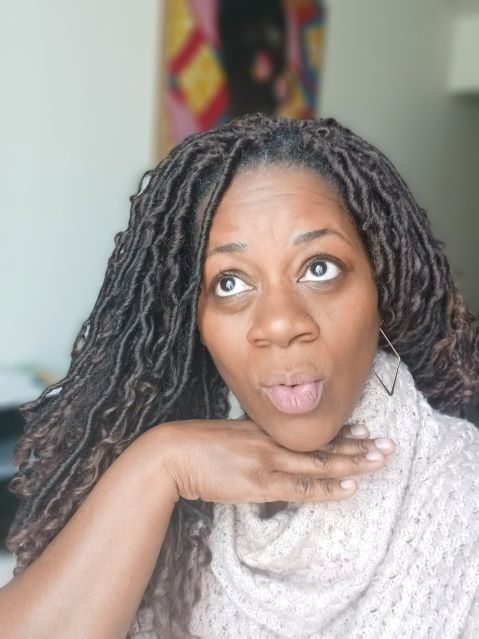
About the Author
Sorilbran Stone | Visibility Strategist
I serve as the resident content strategist and the official Content Marketing Coordinator at The Shelf. Marketing is my happy place. I’m as happy looking at analytics as I am actually creating a thing. I focus a lot on dreaming up and implementing the best ways to create, publish, and distribute content that builds our brand and gets our readers to do a thing



